The Spherical Book : Writing in a Three-Dimensional Alphabet (3 of 4)
Sculpting an Alphabet
The following drawings were created for an exhibition called The Spherical Book, which I presented along with @hansikhouse, @voronoi, and @arete as the first project by our design collective @hitheryon. If you missed my post describing this exhibition and the concept of the spherical book, check it out here.
The Spherical Book exhibition was an exploration of how the discovery of a single unknown object (for example: a spherical book) could potentially have a domino effect and transform the design of not only bookshelves, but also houses, cities, language and even human interaction. As my contribution to the exhibition, I chose to focus on the ways in which three-dimensional writing would alter our understanding of inherent meaning and comprehension. I created a series called Times New Roman: Plan, Axonometric, Rendering, which explores this potential for hidden dimensions behind the two-dimensional alphabet we know.
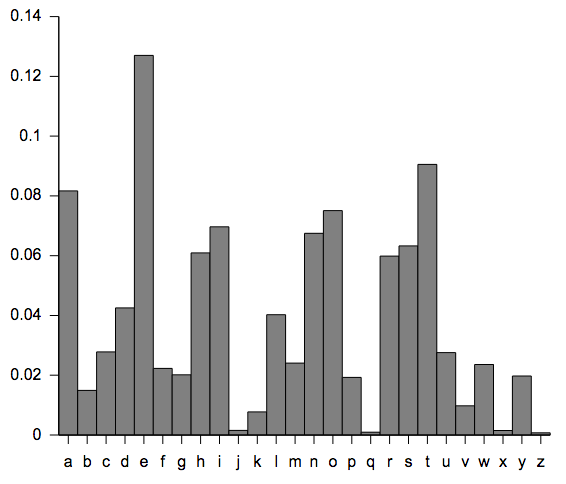
My first move was to create a three-dimensional alphabet in a digital modeling program called Rhino. Using the Times New Roman font as my starting point, I wanted each letter to be fully legible when viewed from above, but when the three-dimensional form is rotated off of the above view, suddenly we find the previously unseen sculptural form found within each letter. In order to make the sculptural forms less arbitrary, I based the sizes of the letters off of their frequency of use in the English language (as shown in the table above). For instance, "e" is the most commonly used letter in English, so it was extruded as the tallest letter, whereas less-common letters like "j" and "z" are very squat and stay low to the ground. Here is a look at the final 3D Times New Roman alphabet I designed:
"The Library is a Sphere"
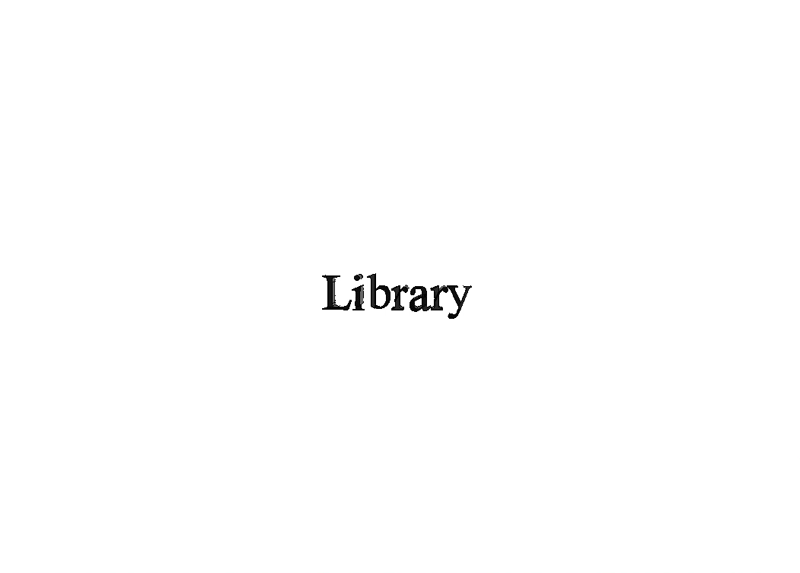
Once I had built the alphabet, I asked each member of @hitheryon to provide a quotation that for them best-represented the concept of the spherical book. I then dropped each quotation into Rhino and built it letter by letter using my 3D alphabet. @voronoi provided a very fitting excerpt from Jorge Luis Borges' book The Library of Babel:
That cyclical book is God.) Let it suffice for the moment that I repeat the classic dictum: The Library is a sphere whose exact center is any hexagon and whose circumference is unattainable...Man, the imperfect librarian, may be the work of chance or of malevolent demiurges; the universe, with its elegant appointments — its bookshelves, its enigmatic books, its indefatigable staircases for the traveler, and its water closets for the seated librarian — can only be the handiwork of a god. In order to grasp the distance that separates the human and the divine, one has only to compare these crude trembling symbols which my fallible hand scrawls on the cover of a book with the organic letters inside — neat, delicate, deep black, and inimitably symmetrical.
Here are some screenshots of the digital model I ended up with after converting the above quotation into the 3d alphabet:
Final Presentation:
The final drawings I created for this series were presented as vertical triptychs, each displaying the plan, axonometric, and render view of the three-dimensional digital model created from the provided quotations. The plan view presents the text as we know it in two dimensions, whereas the axonometric and render views display one of the infinite perspectives from which we can view the three-dimensional form.
giclée prints, 18" x 18" each, 2011
Close-Ups
Reflections
My favorite part of this project is the total loss of comprehension between the above view and the rendered view. There are places in the axonometric view where you can see hints of recognizable letters, but as soon as you look at the rendered view (which removes the extruded bodies of the letters and only displays the distorted top surfaces), the English alphabet takes on a completely different life. Suddenly the rigid letters we've come to know well as Times New Roman have a lightness and elegance in their overlapping forms. The text could easily be mistaken for a foreign language, when in fact it is nothing more than our standard English alphabet viewed from a different angle.
This project makes it clear that a given body of text can contain multiple perspectives, dependent more on the physical impression of the individual than the objective meaning of the words
Part 1 | Part 2
Let me know what you think of this 3D text in the comments below.

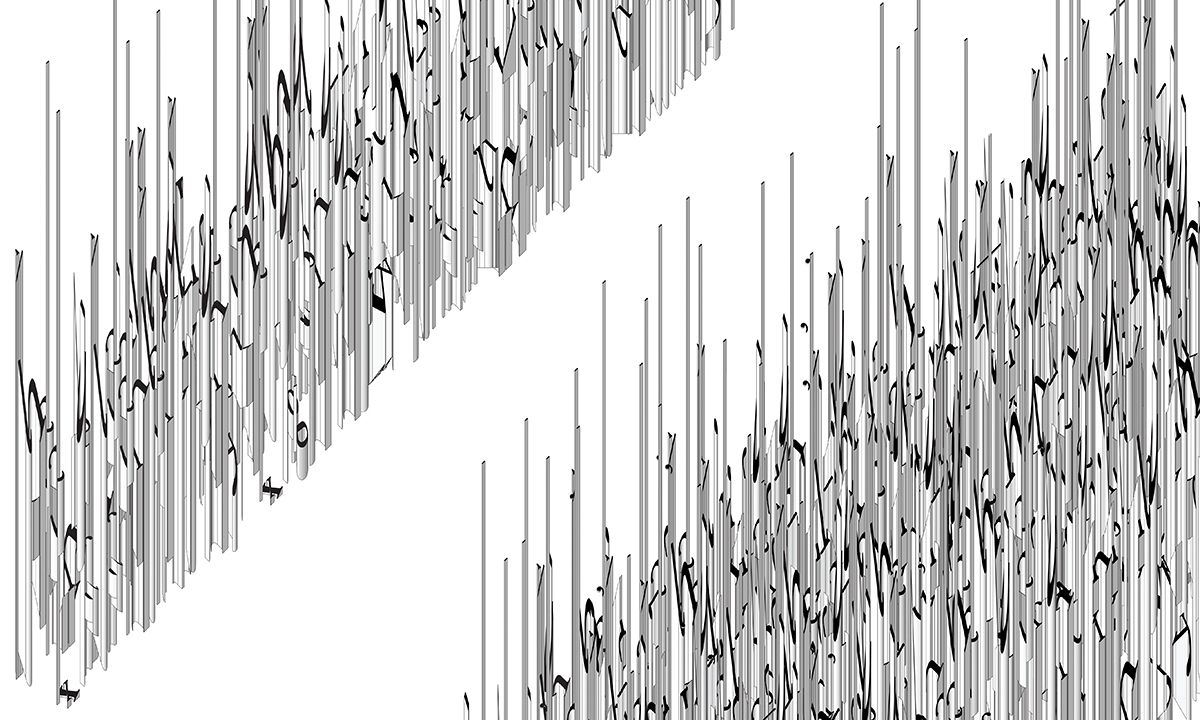
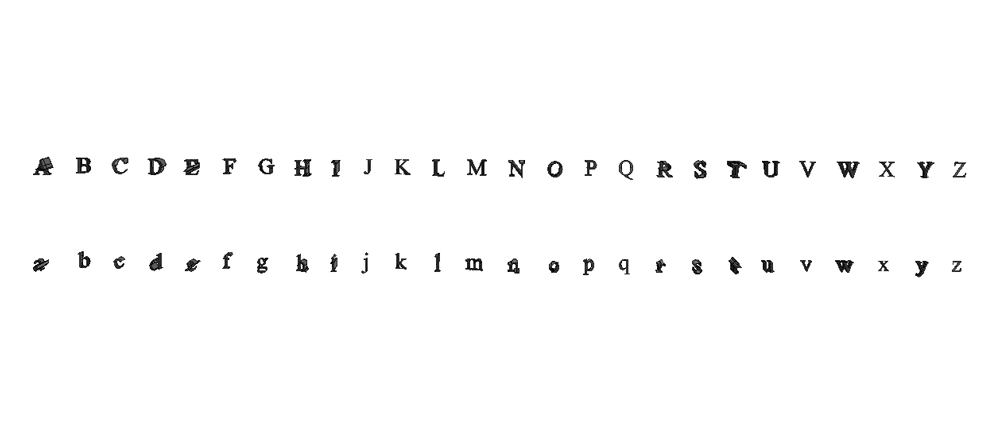
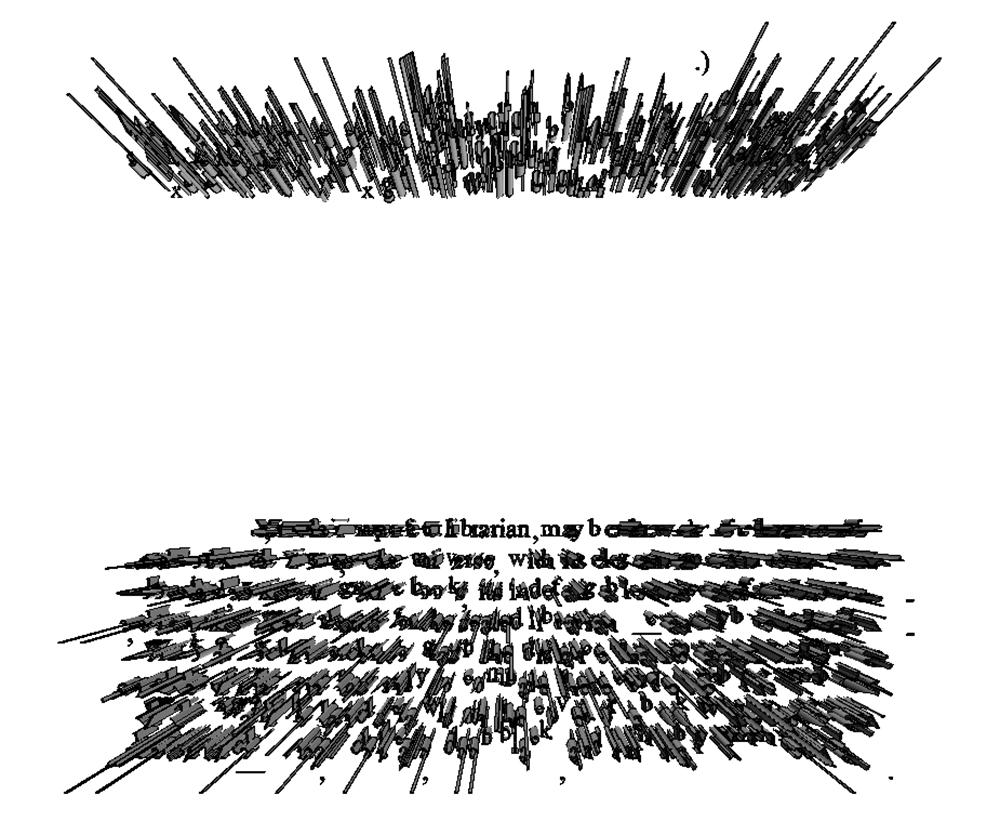
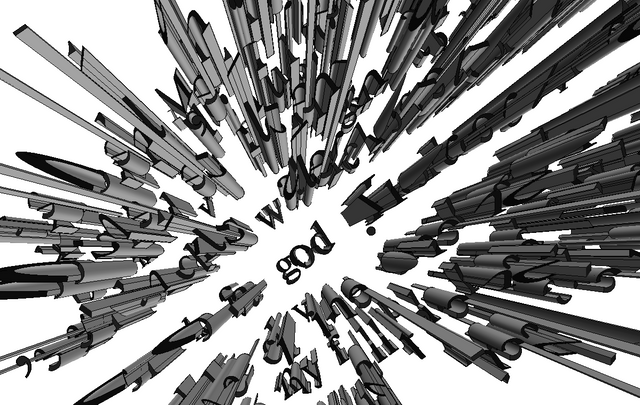
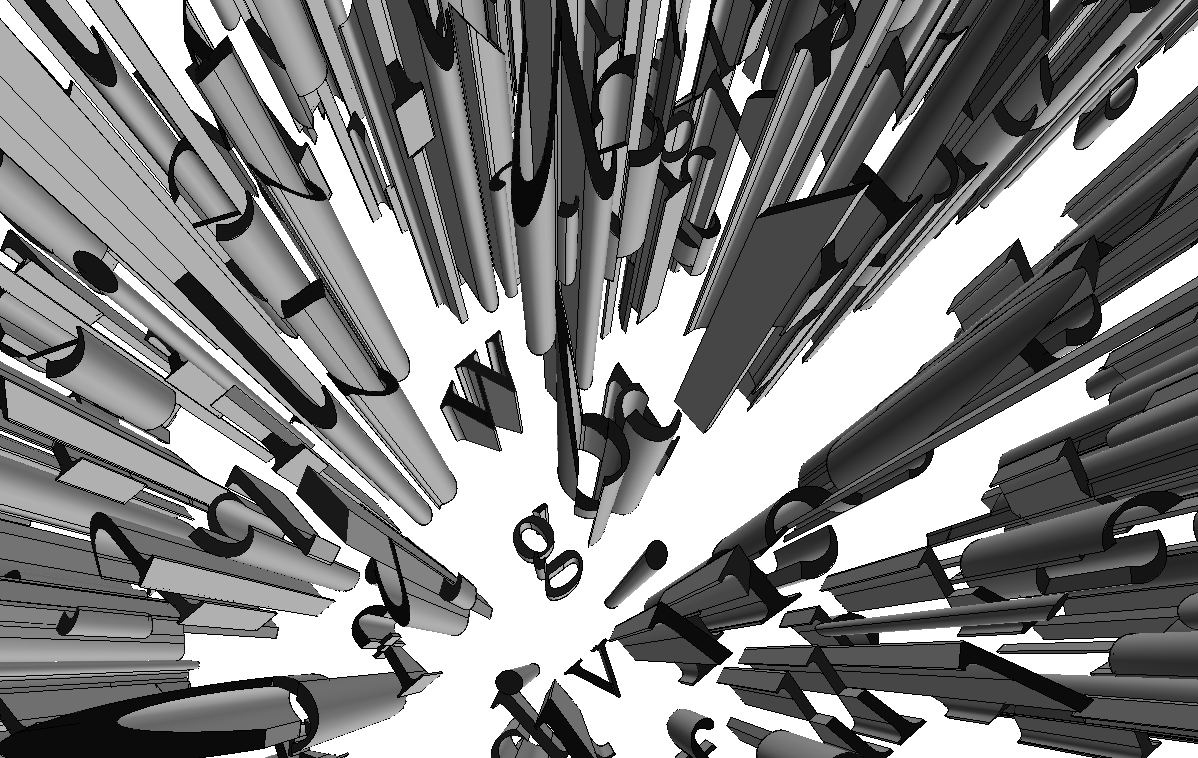
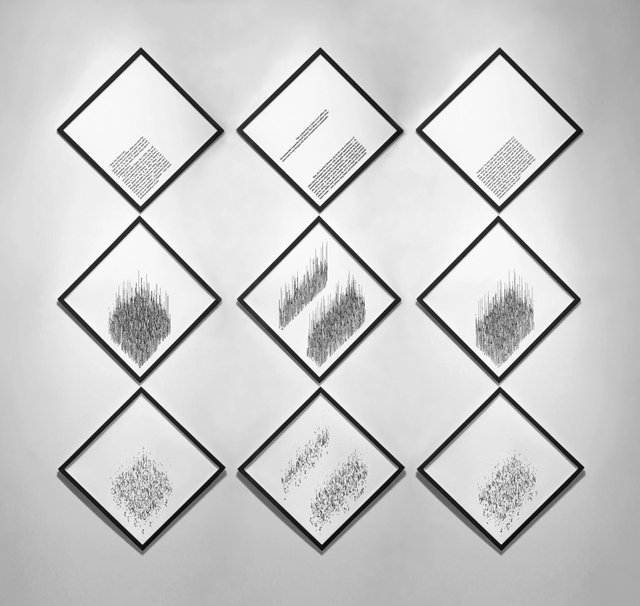
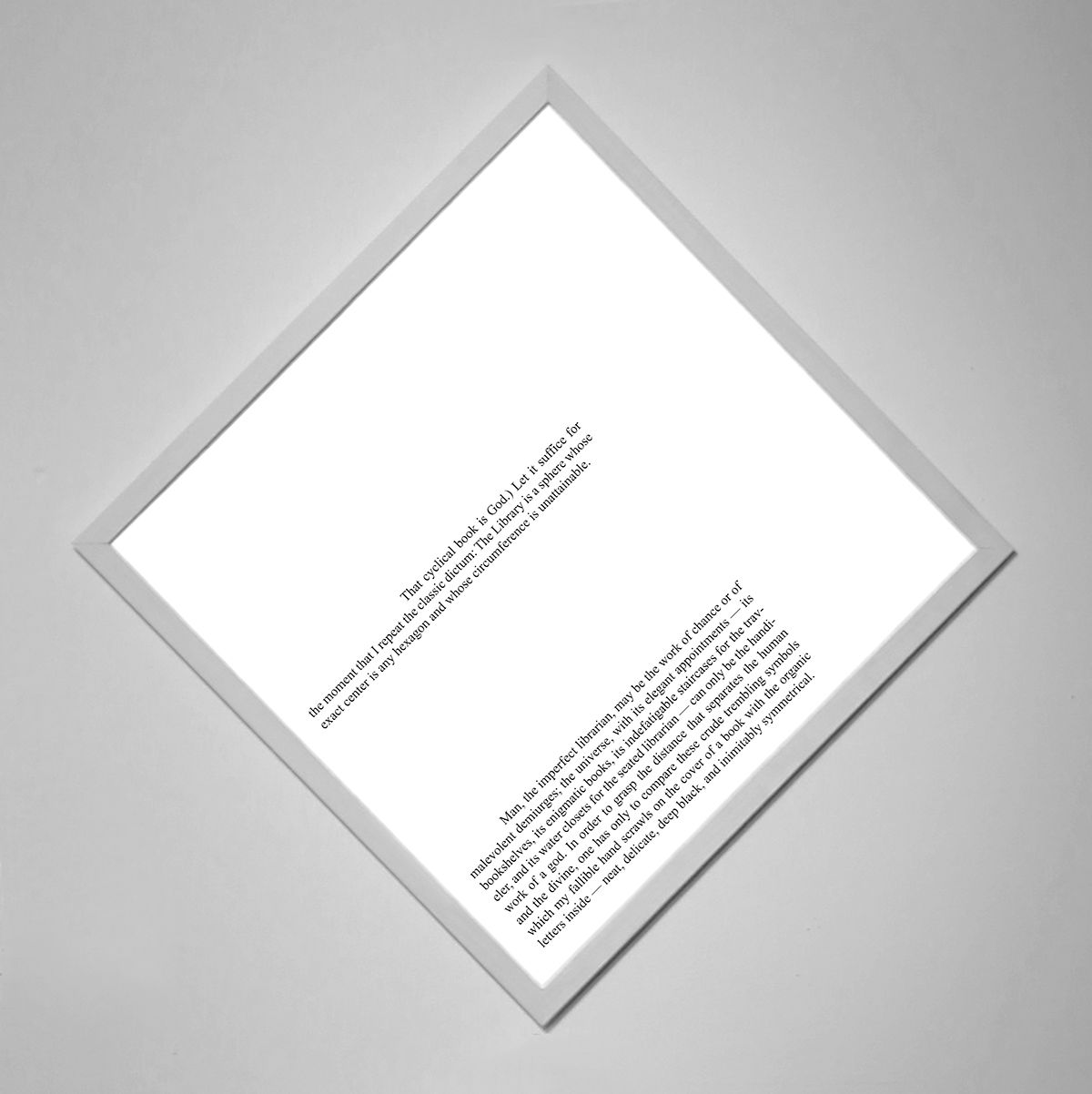
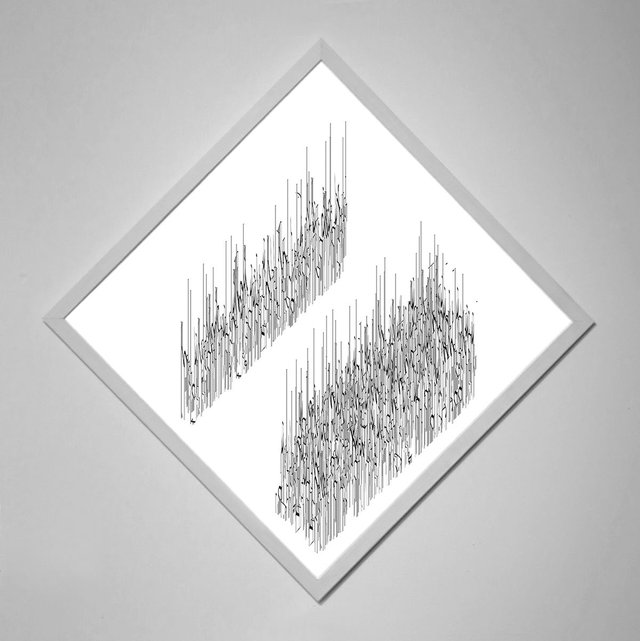
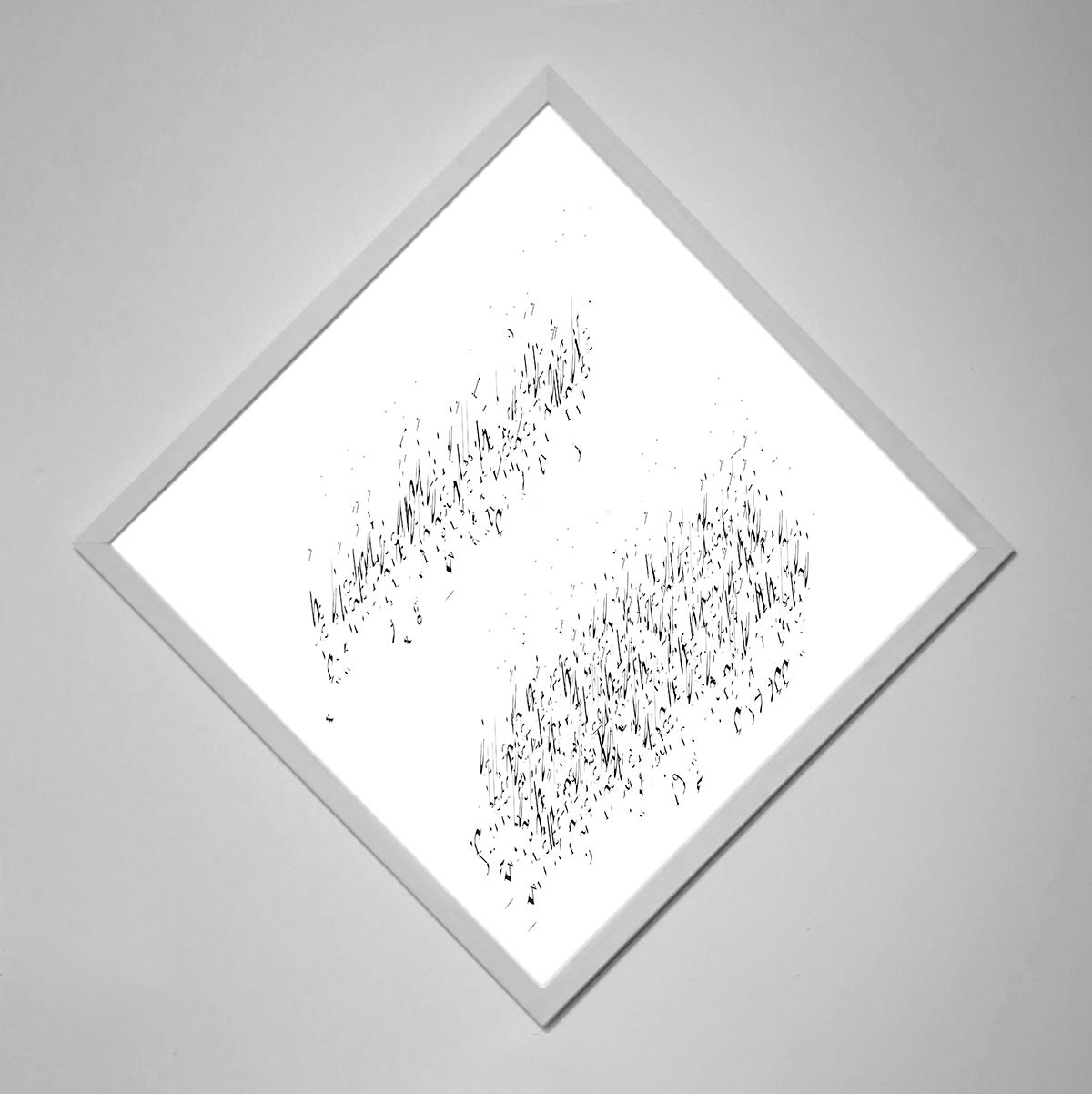
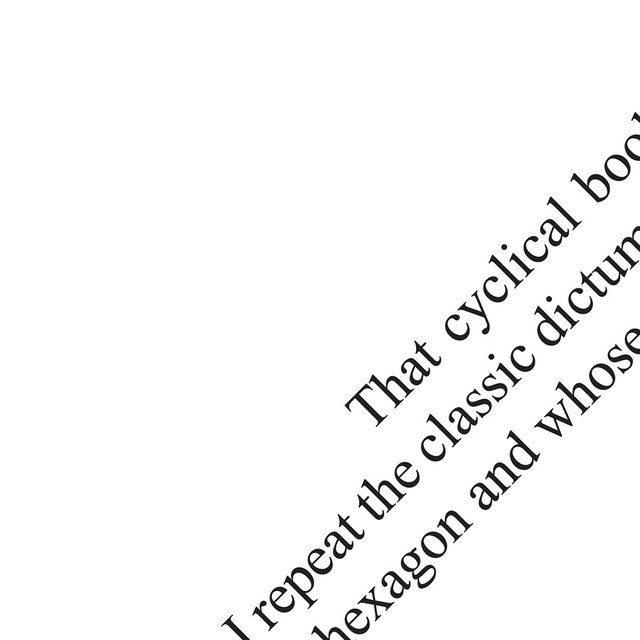
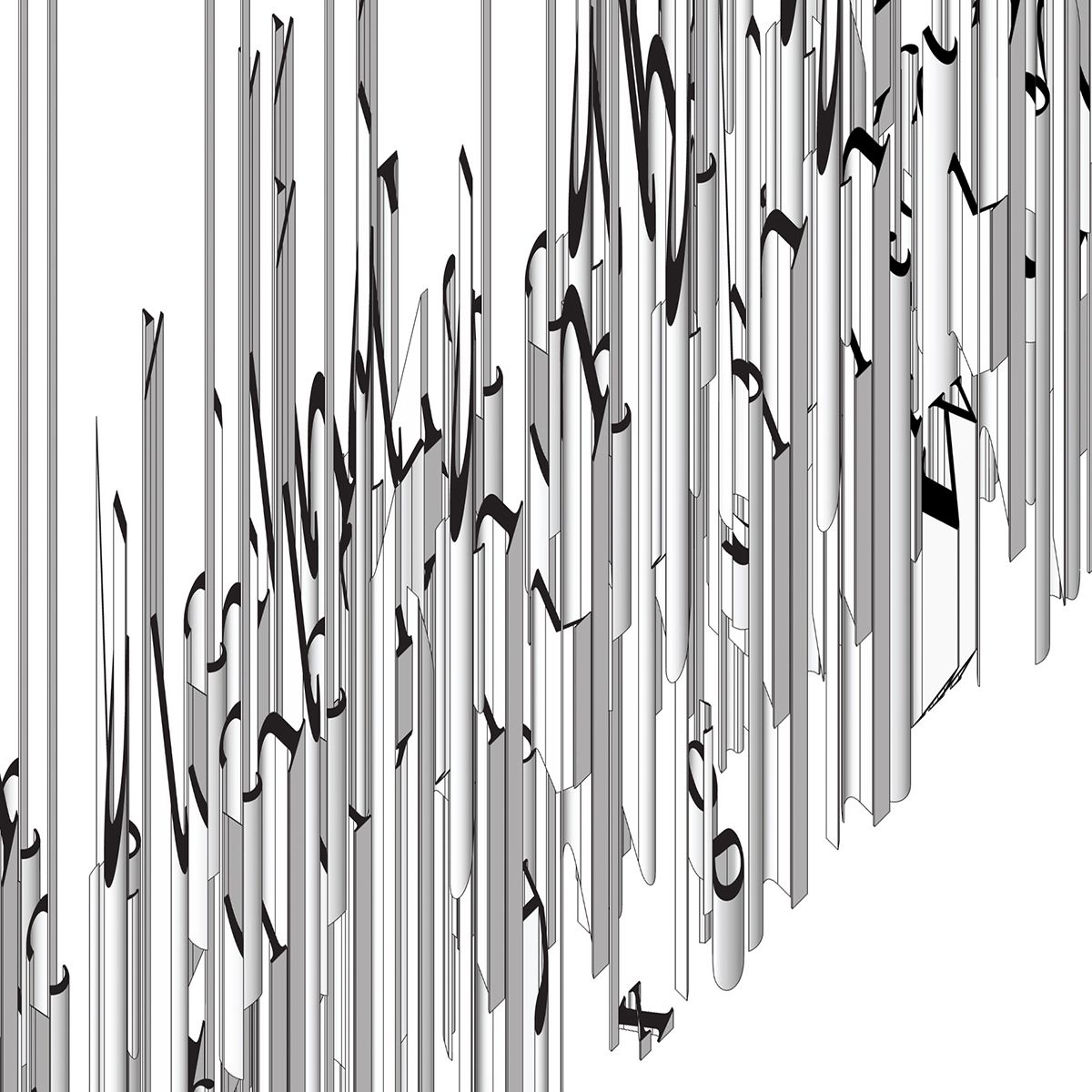
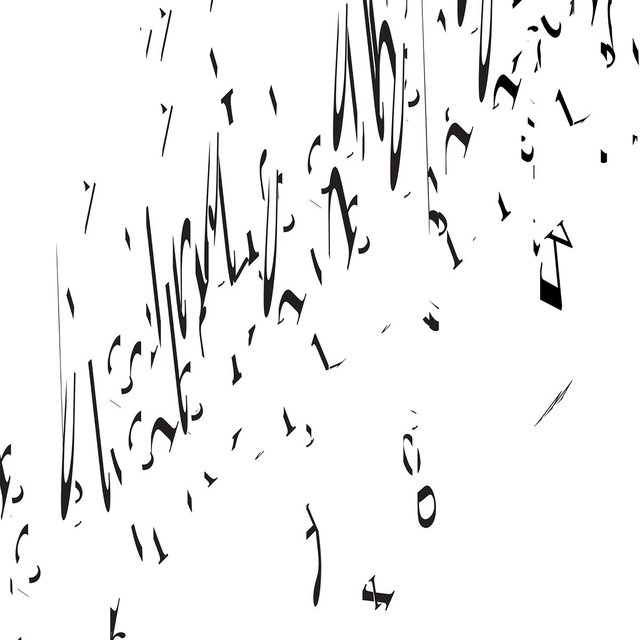
I find this really amazing. I like how you are dedicating your artistic endeavors toward finding new dimensions in the familiar. Every one of your posts I’ve read has made me rethink what I know about the world around me, with the realization that there is something amazing hidden in the nooks and crannies.
We take it for granted that language is static, the rules were written in stone a long time ago. It’s easy to think our native tongue will stay the same ad infinitum, but English has come a long way since olde English and Spanish the same with Latin.
A 3D alphabet could be the start of a whole new way to organize data, not just on paper or the digital realm, but in our own minds. It could lead to a paradigm shift. I mean the universe is not a flat two dimensional space, so how close could two dimensional words come to truly describing it! 3D words for a 3D world 😎
This idea of the 3D world totally reminds me of the language from The Arrival. You’re actually a septapod aren’t you? I knew it! 🤪
Thanks so much for the thoughtful response @nostone-unturned! I really appreciate it. I am indeed a septapod. You have discovered the truth.
And I agree - a 3d language for a 3d world would make more sense! As long as our computer screens are 2d surfaces I don't think language will become 3d, but as soon as digital technology moves into the world of 3d projection / virtual reality, I can totally imagine the way we communicate to completely change. Why not have a language that we can walk around and peer into and see from multiple different angles! That thought excites me and also intimidates me!
It’s funny you mention that! I caught a Steemit post pointing to this Engadget Article that talks about just such a 3D projection type technology. The clock is ticking, get to work @erb!
Wow that is so cool!! Thanks for sharing!
Hmm I just had a thought (cuz this idea is stuck in my head now), what would be the most likely feature of language represented by a third dimension? Frequency of use is a likely candidate, but I think frequency of vibration might convey more information to the reader. Imagine a cross between English (or any language) and written music. The z-length (3rd dimension) could tell the reader what octave the letter should be pronounced at. (Damn you dangling participle!) or it could be simpler and tell you wether an “A” should be the hard A or soft “ahh”. What do you think?
I love this idea @nostone-unturned! I think this would be a better way to determine the 3d form of each letter because this way the z-dimension actual provides valuable information and allows people to understand pronunciation just by looking at it. I also love the thought of all these letters being arranged and then simultaneously hit with a mallet and bellowing out a decipherable word or phrase.
On a different note - It's funny you commented with this idea because I recently wrote a short story about a place where emotions can only be felt when they are spoken aloud, because the vibrations and resonances of the body are the only way emotions can be felt. And the compatibility of two lovers is only a function of whether the musical notes produced by their emotions harmonize.
Simple idea, hard to explain here without the whole story, but thought I'd share because you reminded me of it. Thanks for continuing to contribute to this 3d alphabet discussion!
I like the mallet idea too @erb lolz. This is really an awe-inspiring concept. Language will evolve in time just as it has always done. Language used to develop based on factors like the distance between other people who speak your language. We are seeing this now as languages form their own "online dialects." The digital space is the natural place for a 3D alphabet to develop.
I like you're story idea, btw.
This is a mind-blowing concept, the spherical book itself and what could follow if it was this way... I like this sort of speculations, I'm a hardcore sci-fi (and fantasy) fan, so it's pure delight for me! It was very intriguing to see your artistic outcome!
I've read your other post on the exhibition of your collective work, I'm very impressed, this is a big achievement! Congratulations!
I'm also wondering how is it to work in an artistic collective :)
All the best,
Klaudia
Thanks so much for the kind words about this project @shinyforest! It means a lot that you read through the concept and that you found it intriguing!
Working in a collective is a challenge for a lot of reasons, but I think it's worth the complications. Besides the obvious difficulty of coordinating multiple people to work on a single project, there's also the complication of coming up with an idea collectively that every member feels passionately about. But in our experience, the hard work of talking out our ideas until all four members agreed on something was exactly what lead us to your strongest ideas. A lot of times we'd sit and talk for hours (or days) before we could even start working, but it was always worth it in the end. I think our ideas as a group were always stronger than any ideas I had as an individual. One thing that really helped us was to have a framework of working that allowed each member to still express his individual voice within the collective project. We'd come up with an idea as a group, but each person could still go off and have the time and space to express that idea in his own way before coming back together.
Thank you @erb for your cool explanation. Sounds like a fascinating synergy to me. And it's interesting how you found a way to leave a personal space for each member's individual vision and expression. Very thought-provoking and inspiring to me... I'm amazed that you were able to achieve this level of cooperation. Can't wait to see more from you.
Love,
Klaudia